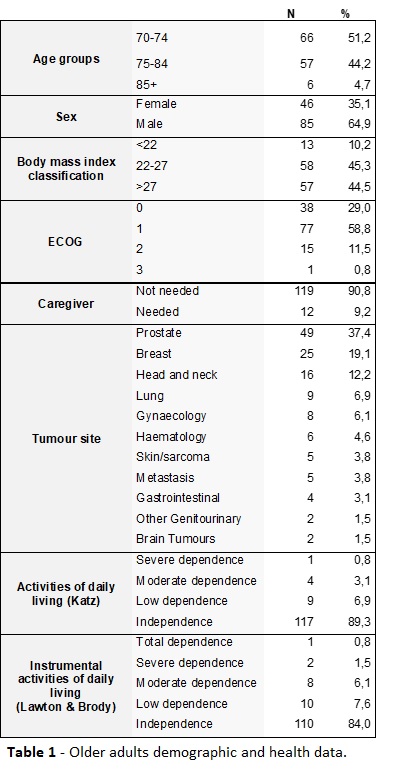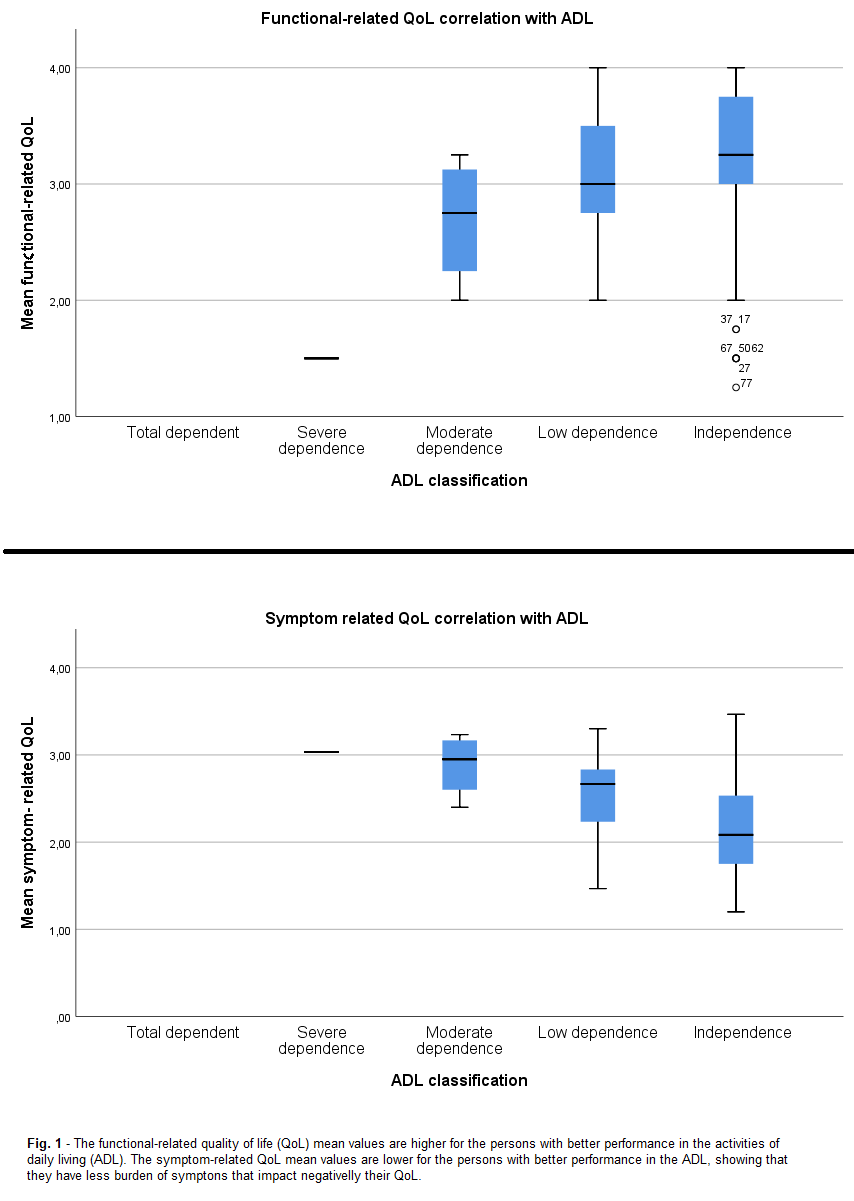Association between activities of daily living and quality of life in older people undergoing RT
Claudia Franco de Sa,
Portugal
PO-1072
Abstract
Association between activities of daily living and quality of life in older people undergoing RT
Authors: Edna Darlene Rodrigues Pinto1, Fátima Aires2, Claudia Sá2, Catarina Elzen2, Alice Alves2, Elisabete Soares3, Maria Jose Moura2, Escarlata López4, Laetitia Teixeira1
1Instituto de Ciências Biomédicas Abel Salazar, University of Porto, CINTESIS, Porto, Portugal; 2Centro Hospitalar Universitário São João, E.P.E, Radiotherapy, Porto, Portugal; 3Instituto Portugues de Oncologia - Francisco Gentil, Radiotherapy, Porto, Portugal; 4GenesisCare, Radiotherapy, Madrid, Spain
Show Affiliations
Hide Affiliations
Purpose or Objective
Survival and quality of life may have different meanings for older people. The EORTC-QLQ-ELD14 questionnaire is a quick and reliable tool to evaluate the quality of life. Also, is validated for the Portuguese population. It has two main domains, the symptom and functional QoL scales. The symptom one includes mobility, joint stiffness, worries about others, future worries, and burden of illness. The functional QoL scale compromises maintaining of purpose and family support. A high score in functional scale represents a high level of functioning, whereas a high score for the symptom scales/items represents a high level of symptomatology or problems. The main objective of this study is to evaluate the quality of life of people aged 70 years or older undergoing radiotherapy and the association with activities of daily living.
Material and Methods
Patients aged ≥ 70 years undergoing radiotherapy were included. Patients with cognitive impairment were excluded. Descriptive analysis and association between quality of life and sociodemographic/health variables were performed (shown in Table 1). The significance level considered was 0.05.
Results
We included 131 older people with a median age of 74 years (IQR=6), 85 men (64.9%). The prostate was the most frequent tumour location (n= 50, 38.2%). Activities of daily living (ADL) was the variable with a significant correlation with more domains of QoL. Participants with higher dependence on ADL scored poorer in functional scale (purpose [p=0.001] and family support [p=0.015]). Also presented more worries about others [p=0.018], future worries [p=0.002], greater burden of disease [p=0.018], more frequent mobility difficulties [p=0.004] and joint complaints [p=0.001]. There were other variables with a significant correlation with QoL. The participants with caregiver presented lower life purpose [p=0.003], more frequent mobility difficulties [p=0.004], greater future worries [p=0.034] and a higher disease burden [p=0.02]. Female patients had lower life purpose [p=0.006], more frequent mobility difficulties [p=0.042] and joint complaints [p<0.001], greater worries about others [p=0.001], future worries [p=0.042], and significant disease impact [p=0.027]. Participants with breast or lung tumours presented more mobility difficulties [p=0.021] and greater burden of disease [p<0.001]. For breast cancer patients, joint complaints were more prevalent [p=0.001].
Conclusion
The assessment of quality of life allows to know the difficulties perception from the viewpoint of the older person. For this population there were a significant correlation with ADL performance and multiple QoL domains.

